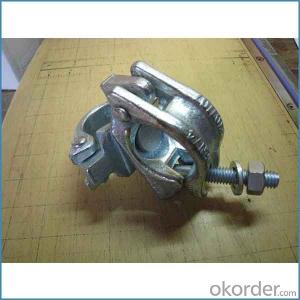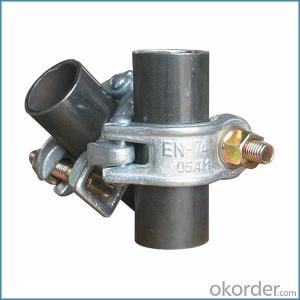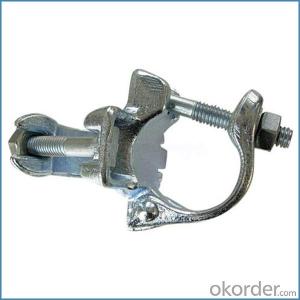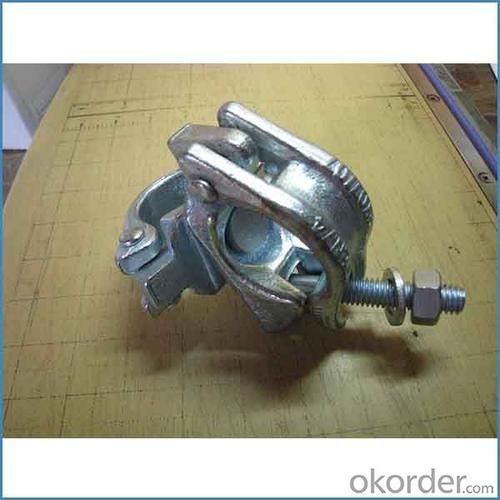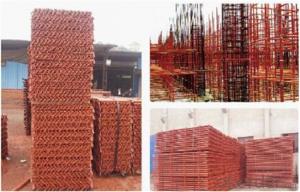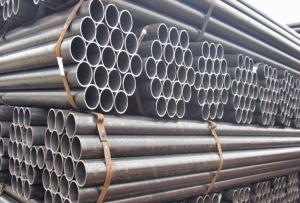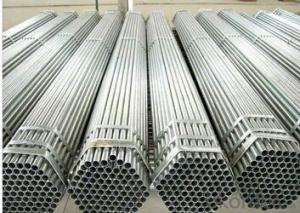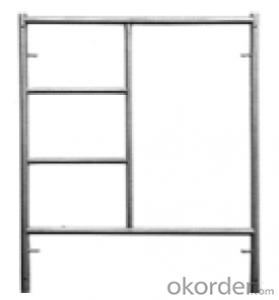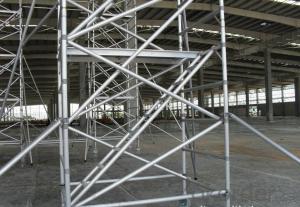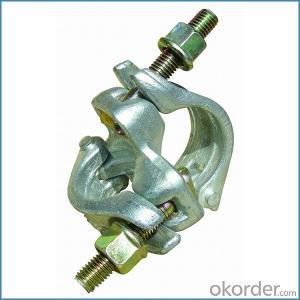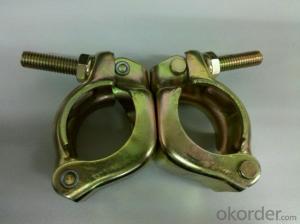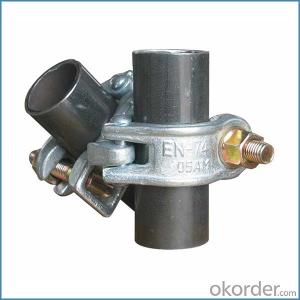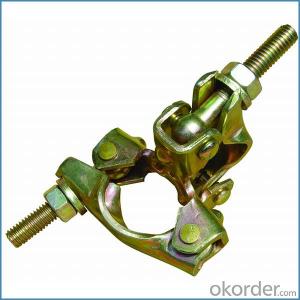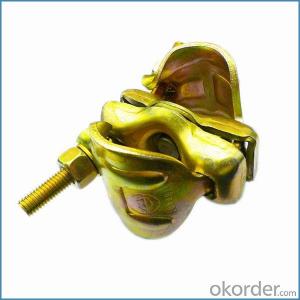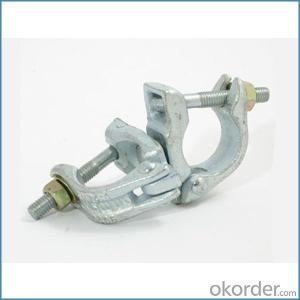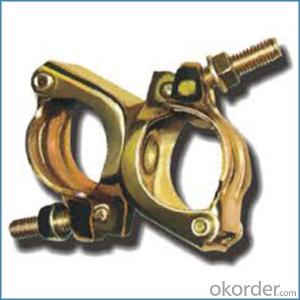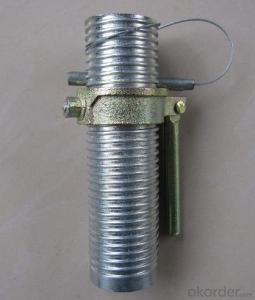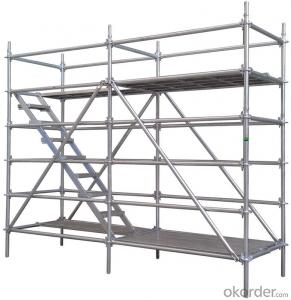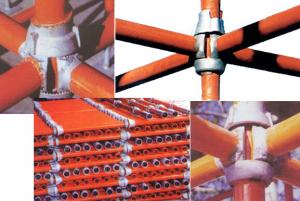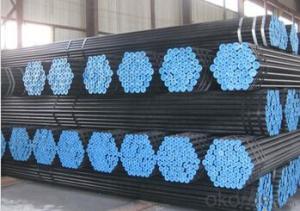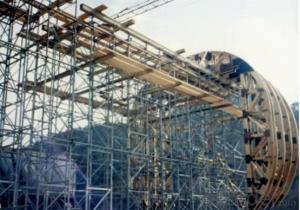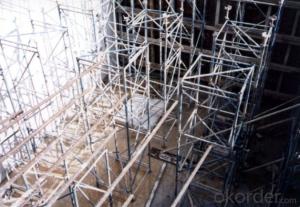Scaffold Board Retaining Coupler British Type for Sale
- Loading Port:
- Tianjin
- Payment Terms:
- TT OR LC
- Min Order Qty:
- 1000 kg
- Supply Capability:
- 100000 kg/month
OKorder Service Pledge
OKorder Financial Service
You Might Also Like
Scaffold Board Retaining Coupler British Type for Sale
Description
1.The scaffolding coupler is always used to connect the steel pipe as scaffolding system.
2.The often used coupler is swivel coupler and righ angle coupler .
3.We can provide types of scaffolding coupler according to your requirement.
4.Couoler can fix the 48.3mm scaffolding steel pipe tightly and make the whole scaffolding system more steadily.
5.Material:Q235 steel
6.Overall Size:48.3mm*48.3mm
7.Surface Finish: Galvanized/ Painted
8.Standard:BS1139,EN74
9.Package:25pcs/bag
10.Manufactuering as per customer requirements
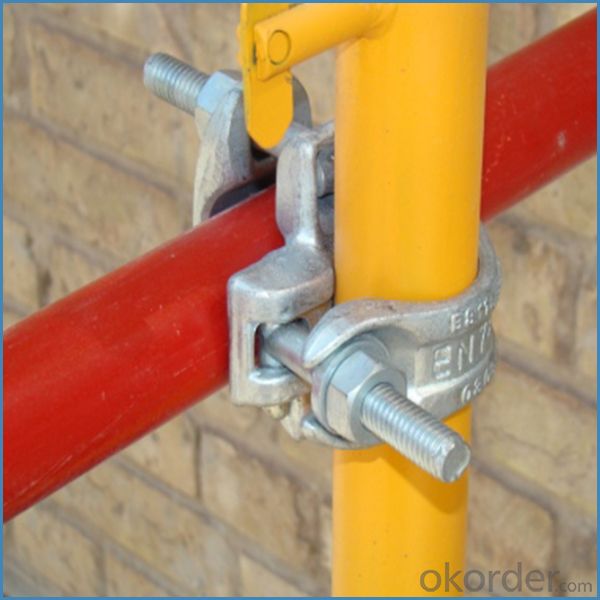
Feature
(1)Excellent Anti-Breaking—Cold Pressed Steel
(2)Outstanding Resistance Deformation
(3)Strong Anti-Dropping Ability
(4)Longtime USe
(5)Qualtity Guaranteed
(6)OEM Service
Photo
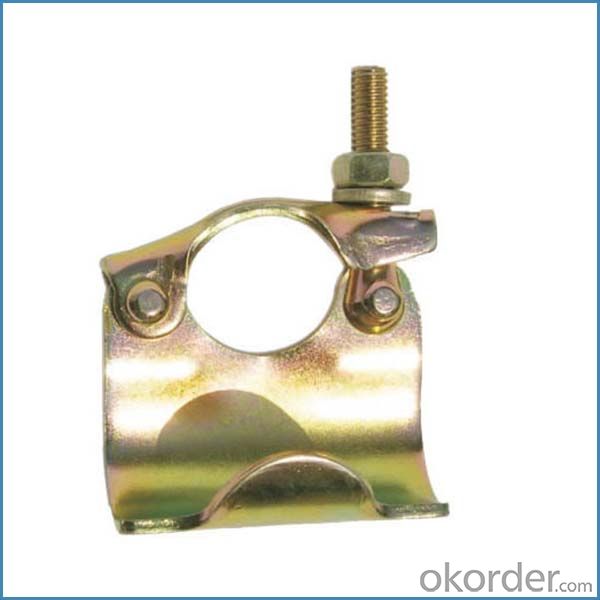
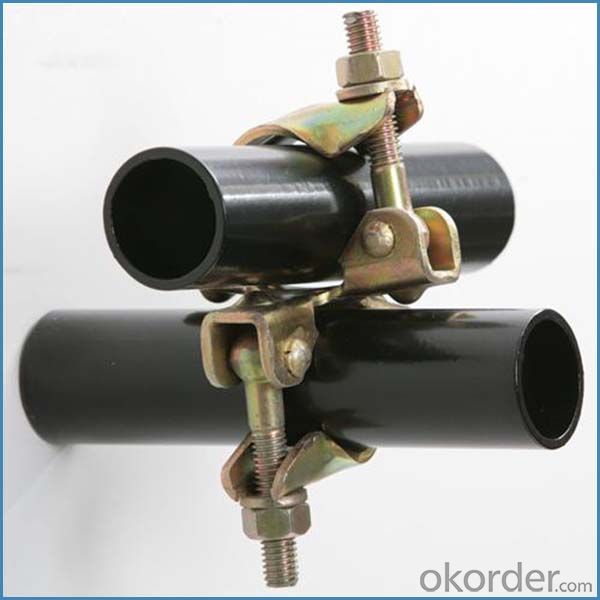
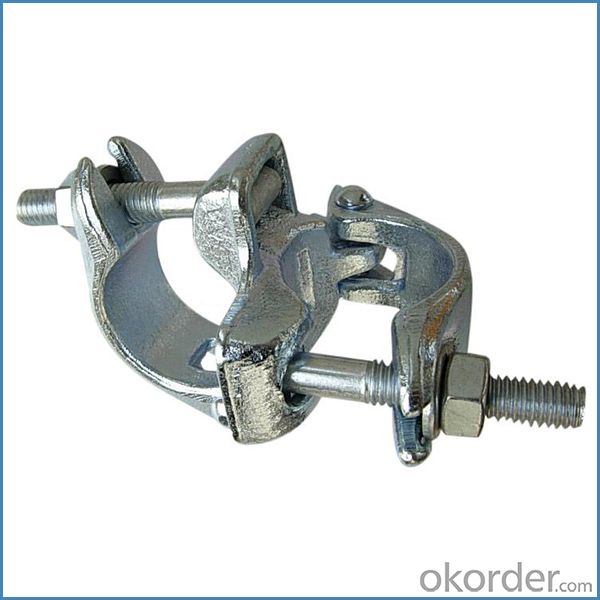
Parameter
| Material | Q235,345steel |
| Size | 48.3mm*48.3mm |
| Surface finish | Galvanized |
| Weight | 1.1kg around |
| Standard | BS1139,EN74 |
| Package | 25pcs/bag,steel pallet |
| Manufacture | As per customer requirement |
| Market | Africa, South America, the Middle East and Asia |
FAQ
Q: Are you a factory or trading company?
We are a state-owned corporation in China,dealing with various kinds of building materials.We have our holding subsidiaries.
Q: Where is your factory located? How can I visit there?
Our factory is located all around China.
Q: Can I get some samples?
Sample is free, customer only pay freight for the first time.
Q: Delivery?
10-30days. (5-15 containers)
Any question,feel free to contact us.
- Q: Can steel tube couplers be used in different types of scaffolding systems?
- Yes, steel tube couplers can be used in different types of scaffolding systems. Steel tube couplers are versatile and commonly used in construction scaffolding to connect and secure steel tubes together. They are designed to provide a strong and reliable connection, ensuring the stability and safety of the scaffolding structure. Steel tube couplers can be used in various scaffolding systems, including tube and clamp scaffolding, ringlock scaffolding, cuplock scaffolding, and frame scaffolding. However, it is important to ensure that the steel tube couplers used are compatible with the specific scaffolding system and meet the necessary safety standards and regulations.
- Q: How do steel tube couplers compare to other scaffolding connectors in terms of cost?
- Compared to other scaffolding connectors, steel tube couplers are generally more cost-effective. This is mainly because of their straightforward design and construction, which makes manufacturing them easier and less expensive. Moreover, steel tube couplers can be reused and easily taken apart and put back together, reducing the necessity for frequent replacement. In contrast, clamp-type or wedge-type connectors, for example, may be more intricate and need extra components, resulting in higher expenses. Ultimately, the cost-effectiveness of steel tube couplers makes them a favored option for scaffolding systems, offering an affordable solution for construction projects.
- Q: Are there any specific guidelines for the safe use of steel tube couplers in scaffolding near confined spaces or trenches?
- Yes, there are specific guidelines for the safe use of steel tube couplers in scaffolding near confined spaces or trenches. Firstly, it is important to ensure that the scaffolding is designed and erected by competent personnel who have the necessary knowledge and experience. The scaffolding should be inspected and approved by a competent person before it is used. When working near confined spaces or trenches, it is essential to assess the risks associated with the specific area. This includes considering factors such as the stability of the ground, the presence of underground utilities, and the potential for collapse or engulfment. To mitigate these risks, additional precautions should be taken. This may include providing additional bracing or supports to the scaffolding structure, using guardrails and toe boards to prevent falls, and implementing a permit-to-work system to control access to the confined space or trench. Furthermore, it is important to ensure that all workers are trained in the safe use of steel tube couplers and scaffolding equipment. They should be familiar with the manufacturer's instructions and guidelines for assembly, disassembly, and use. Regular inspections and maintenance of the scaffolding and couplers should also be conducted to identify any defects or damage that could compromise safety. Any issues should be promptly addressed and rectified. Finally, it is crucial to have an emergency plan in place in case of an incident or accident. This plan should include procedures for evacuating workers, providing first aid, and contacting emergency services. By adhering to these guidelines, the safe use of steel tube couplers in scaffolding near confined spaces or trenches can be ensured, minimizing the risks to workers and maintaining a safe working environment.
- Q: Are steel tube couplers adjustable for different heights in suspended scaffolding?
- No, steel tube couplers are not adjustable for different heights in suspended scaffolding. They are used to securely connect steel tubes together, but the height of the scaffold would need to be adjusted by changing the length of the tubes themselves.
- Q: Can steel tube couplers be used for scaffolding structures that need to provide access to confined or restricted areas?
- Steel tube couplers are capable of being utilized in scaffolding structures to grant entry into limited or constrained regions. In scaffolding systems, steel tube couplers are frequently employed to interconnect and fasten steel tubes together, thus producing a stable and dependable formation. These couplers exhibit adaptability, permitting the establishment of various arrangements, specifically those necessary for approaching restricted or confined spaces. Through the application of steel tube couplers, scaffolding can be constructed in a manner that enables laborers to access and operate within constricted areas, thereby guaranteeing secure and efficient entry to these regions. Furthermore, the robustness and endurance of steel tube couplers are widely recognized, further bolstering the stability and safety of the scaffolding composition in such environments.
- Q: What are the cost implications of using steel tube couplers in scaffolding?
- The cost implications of utilizing steel tube couplers in scaffolding can differ depending on various factors. To start with, the purchase price of steel tube couplers may be higher when compared to alternative scaffolding connectors like pressed steel fittings or wedge connectors. This is due to the fact that steel tube couplers are typically made from top-quality materials and have a sturdier design, attributing to their increased cost. However, one of the primary advantages of steel tube couplers lies in their durability and longevity. They are specifically engineered to withstand heavy loads and ensure a secure connection, thus reducing the possibility of accidents or scaffold failures. Consequently, this enhanced durability leads to a prolonged lifespan for the scaffolding system, ultimately reducing the necessity for frequent replacements or repairs. Moreover, steel tube couplers are adaptable and compatible with various types of scaffolding tubes, allowing for effortless assembly and disassembly. This flexibility can save time and labor costs during the construction or dismantling process. Furthermore, the utilization of steel tube couplers can elevate the safety of the scaffolding system. Their robust and dependable connection guarantees stability and minimizes the risk of scaffold collapse, consequently reducing potential accidents and associated costs such as medical expenses, legal fees, and reputational damage. In conclusion, although steel tube couplers may entail a higher initial cost, their durability, versatility, and safety benefits can generate long-term cost savings by diminishing the need for frequent replacements, minimizing labor expenses, and mitigating the risk of accidents.
- Q: What are the common installation procedures for steel tube couplers?
- Achieving a secure and reliable connection between two steel tubes using steel tube couplers involves several steps. Here is an overview of the typical procedures: 1. Preparation: Prior to commencing the installation, gather all the necessary tools and equipment, such as wrenches, nuts, bolts, and the steel tube couplers. It is essential to ensure that the steel tubes to be joined are clean and free from any debris or rust. 2. Positioning: Place the steel tubes in the desired position, ensuring proper alignment. Verify that there is sufficient space to install the coupler and that the tube ends are cut squarely. 3. Coupler Placement: Slide the steel tube coupler over one end of the tube until it reaches the desired location. The coupler should fit tightly around the tube without any gaps or misalignment. 4. Tightening: Use a wrench to securely fasten the coupler onto the tube. Apply adequate force to establish a secure connection, while being cautious not to overtighten and risk damaging the coupler or the tube. 5. Repetition: Repeat the process for the other steel tube, ensuring correct installation and adequate tightening of both couplers. 6. Inspection: After installation, thoroughly inspect the couplers and the connection to ensure they are secure and properly aligned. Verify for any signs of misalignment, gaps, or loose connections. 7. Testing: To ensure the connection's integrity, conduct a load test or pressure test, if applicable, as per project requirements. It is crucial to have professionals perform the test, ensuring safety and compliance with regulations. By following these common installation procedures, a robust and dependable connection between steel tubes using couplers can be achieved. Remember that specific installation procedures may vary depending on the coupler type and project requirements. Therefore, always consult the manufacturer's guidelines and seek professional advice when unsure.
- Q: OK I am really worried about my scaffold piercing. I've had the piercing for almost 2 months now and a bubble/bump has formed on the entrance to the top hole. It's horrible and I'm worried that it is infected as I have noticed a little bit of yellow discharge, but not much.I think the bump/bubble may be hyprotrophic scarring but I'm not sure.I've been cleaning the piercing by dipping tissue in sea salt solution and then cleaning the holes with cotton buds. Is this OK?Please help :(
- If the bump does not ooze any fluids and does not hurt, also has the color of your skin you know it's a hypertrophic scarring bump. Those bumps are formations of scar tissue ( new skin that is naturally created to heal a piercing ) and it goes away with proper care just takes time to do so. If the bump does ooze any fluids like blood or pus or whatever and it does hurt you know it's a cyst/boil. If this cyst is filled with yellow fluids or pus you know that it also got infected. Both of those bumps are treated with sea salt soaks twice a day. Soak the piercing in and do not just use a tissue. Warm water (8oz) + non iodized salt (1/4 teaspoon) mixed in a cup. Soak the piercing in for 10 minutes, 2 times a day. Use a q-tip to clean around the piercing thoroughly, rinse with water and pat it dry with a paper towel. Another alternative which helps for hypertrophic scarring bumps is the chamomile soaks. Industrial is a piercing that goes through cartilage and not just skin. It's not an easy piercing and healing time is 1 full year. Do not stop the sea salt soaks and do not get lazy because cartilage piercings have their ups and downs while healing. They can stay irritated, swollen and painful for long, bumps can be formed around them which can also get infected etc. All this goes away after proper care but can happen again days or even months later. So you need to be extra careful with those piercings and follow your piercers aftercare instructions by the book. Until the piercing is fully healed don't : Touch it, twist the jewelry, change the jewelry or take it out, sleep on it, play with it, but only touch it with freshly washed hands to clean it.
- Q: How do steel tube couplers affect the overall cost of scaffolding projects?
- Steel tube couplers can have a significant impact on the overall cost of scaffolding projects. These couplers are essential components that connect the steel tubes, forming a sturdy and reliable structure. The cost of steel tube couplers can vary depending on factors such as the type and quality of the couplers, the quantity needed, and the supplier. One aspect that affects the cost is the type of steel tube couplers used. There are various types available, including swivel couplers, sleeve couplers, putlog couplers, and beam clamps. Each type has its own specifications, applications, and cost. For example, swivel couplers are typically more expensive than sleeve couplers due to their added flexibility and adjustable features. The quality of the steel tube couplers also plays a role in the overall cost. High-quality couplers are typically more expensive but offer better durability, strength, and resistance to corrosion. Investing in superior quality couplers can lead to longer-lasting scaffolding structures, reducing the need for frequent replacements and maintenance, thus potentially lowering overall costs in the long run. The quantity of steel tube couplers needed for a particular project directly affects the cost. Large-scale projects that require a significant amount of scaffolding will naturally require a greater number of couplers, resulting in higher costs. It is essential to accurately estimate the quantity needed to avoid over-purchasing and unnecessary expenses. Lastly, the choice of supplier can impact the cost of steel tube couplers. Different suppliers may offer varying prices for identical or similar products. It is crucial to research and compare prices from multiple suppliers to ensure that the best value for money is obtained. Overall, steel tube couplers can significantly affect the cost of scaffolding projects. Factors such as the type, quality, quantity, and supplier of the couplers should be carefully considered to optimize costs while maintaining the required safety and reliability of the scaffolding structure.
- Q: I'm looking to move to oz I'm 42 i have 2 small children and a partner i have a lot of cards scaffolding level 2 and i have my off shore 1s 2 i have over ten years off shore but i have no savings just about 5 grand as my gf spent them all lol . whats the best way to get in can i go on work visa or go on a long holiday find a job while there and apply to stay or is this against the law im wanting to go asap please help i do not know if scafolin is a trade and if it is is it under a different name on visa application
- Scaffolder is not considered to be a trade in Australia and is not included on any lists of occupations that are eligible for an immigration visa. Having a job offer or employer sponsorship makes no difference - the occupation is simply not eligible. The occupation is ANZSCO code 821712 Scaffolder and no Level 8 occupations are included on any lists.
Send your message to us
Scaffold Board Retaining Coupler British Type for Sale
- Loading Port:
- Tianjin
- Payment Terms:
- TT OR LC
- Min Order Qty:
- 1000 kg
- Supply Capability:
- 100000 kg/month
OKorder Service Pledge
OKorder Financial Service
Similar products
Hot products
Hot Searches
Related keywords
